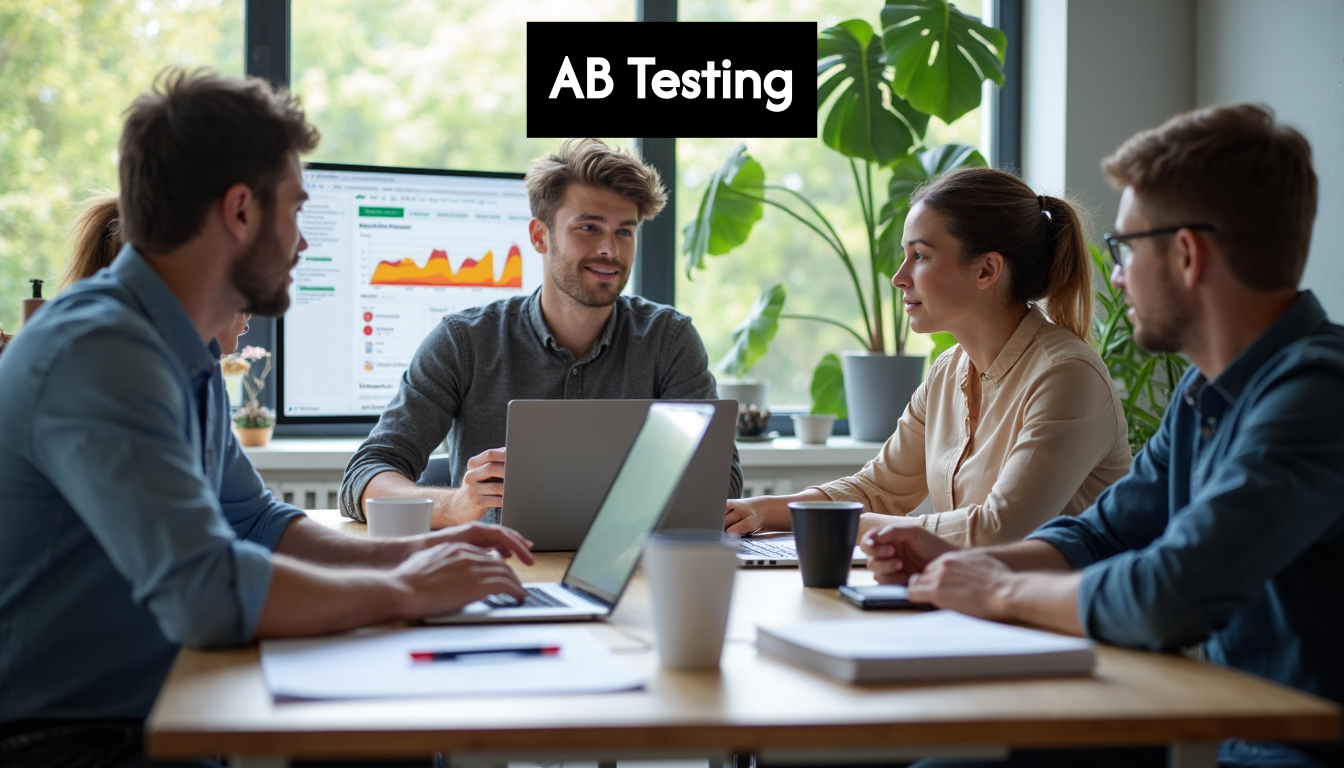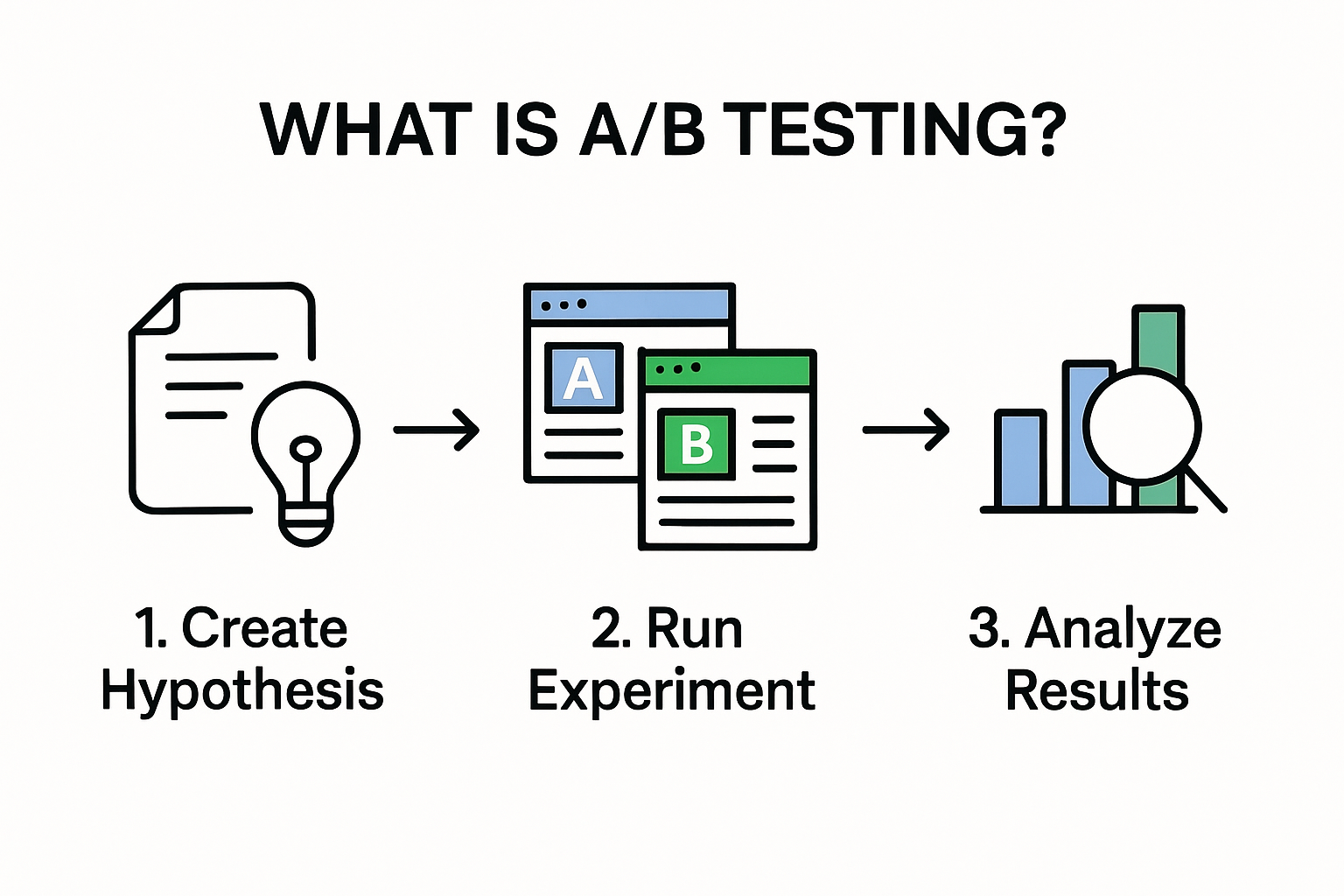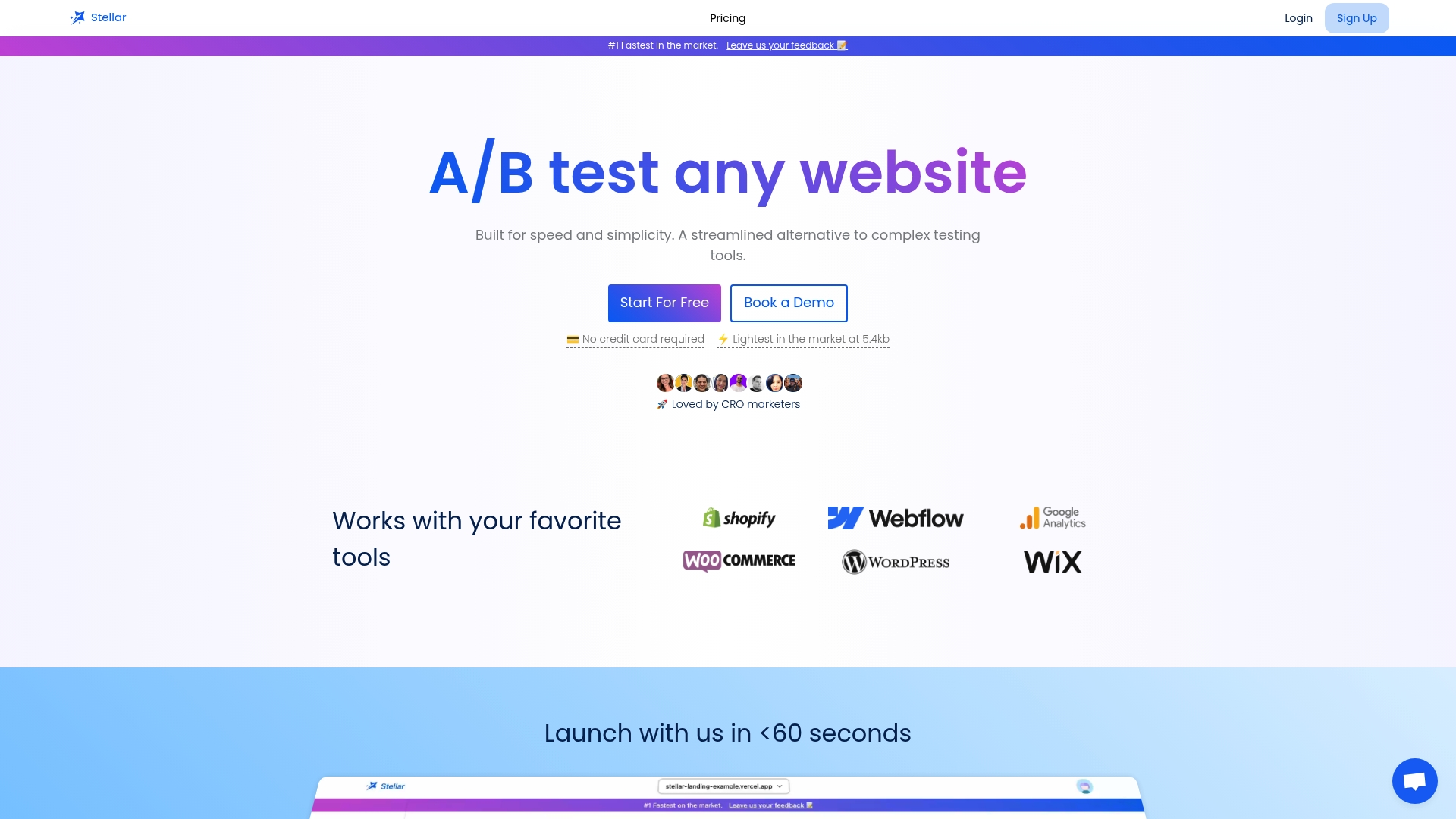
Top 10 AB Testing Examples for CRO Marketers in 2025

A B testing is reshaping how brands win online, and the numbers are hard to ignore. Booking.com boosted conversions by 4.5 percent just by tweaking page layouts, while Amazon’s ongoing tests have lifted conversion rates by up to 25 percent across categories. These results might look like digital magic. The real surprise is it often comes down to the smallest changes, like a button color or a new image. Most marketers focus on flashy redesigns or fancy features, but the boldest wins actually come from testing what seems almost trivial. The difference is in the details—here’s how the leaders do it.
Table of Contents
- Real Ab Testing Examples From Leading Brands
- How Ab Testing Drives Conversion Rate Optimization
- Common Pitfalls And Best Practices In Ab Testing
- Creative Ab Test Ideas For Ecommerce And SaaS
Quick Summary
| Takeaway | Explanation |
|---|---|
| A/B testing drives significant conversion improvements | Leading brands like Amazon and Booking.com demonstrate that systematic A/B testing can increase conversion rates by optimizing page layouts and user experiences. |
| Effective hypotheses are crucial for successful tests | Strong, measurable hypotheses allow marketers to pinpoint specific changes, ensuring that tests yield meaningful insights and actionable outcomes. |
| Continuous optimization fosters a culture of experimentation | Businesses should adopt A/B testing as an ongoing process, treating each test as a learning opportunity to refine user experiences and enhance digital performance. |
| Personalization is the future of A/B testing | Advanced techniques like dynamic content personalization and contextual messaging lead to highly tailored user experiences, making A/B testing a strategic framework for innovation. |

Real AB Testing Examples from Leading Brands
A/B testing represents a strategic approach that transforms raw data into actionable marketing insights. Top brands leverage experimentation to optimize user experiences and drive significant conversion improvements. By systematically testing variations, companies uncover nuanced strategies that dramatically impact their bottom line.
Ecommerce Conversion Optimization Strategies
In the competitive ecommerce landscape, brands like Amazon and Booking.com have mastered the art of A/B testing. Learn more about advanced testing techniques to understand how these industry leaders refine their digital experiences.
Booking.com routinely runs hundreds of simultaneous experiments to understand user behavior. One compelling example involves testing booking page layouts. By modifying elements such as image placement, pricing display, and call-to-action button colors, they achieved a remarkable 4.5% increase in conversion rates. Their methodical approach demonstrates how small visual changes can yield substantial economic impact.
Amazon takes A/B testing to another level with product page optimizations. They consistently experiment with product image arrangements, description formats, and recommendation algorithms. According to research from Unbounce, such strategic testing can improve conversion rates by up to 25% across different product categories.
Marketing Campaign Performance Enhancements
Tech giants like Google and Facebook have revolutionized digital marketing through sophisticated A/B testing methodologies. Google frequently tests search result page designs, ad placements, and user interface elements. By running controlled experiments, they continuously refine user experiences and increase engagement metrics.
Facebook provides a stellar example of email subject line testing. By experimenting with different messaging approaches, they discovered that personalized, action-oriented subject lines increased email open rates by 18%. This demonstrates how nuanced language modifications can significantly impact user interaction.
Website and Landing Page Optimization
Netflix represents another prime example of data-driven experimentation. Their product team continuously tests recommendation algorithms, user interface designs, and content presentation strategies. By running multiple concurrent tests, they create personalized experiences that keep users engaged and reduce churn rates.
According to Wisepops research, 77% of companies running regular SEO experiments see substantial improvements in organic conversions. These real-world examples underscore the transformative potential of systematic A/B testing across diverse digital platforms.

Key insights from these brand examples reveal consistent patterns: successful A/B testing requires meticulous planning, continuous experimentation, and a willingness to challenge existing assumptions. Marketers who embrace this data-driven approach can unlock unprecedented growth opportunities in an increasingly competitive digital ecosystem.
How AB Testing Drives Conversion Rate Optimization
Conversion rate optimization represents a critical strategy for businesses seeking to maximize their digital performance. A/B testing emerges as a powerful methodology that transforms guesswork into precise, data-driven decision-making. Discover advanced conversion optimization techniques to unlock your marketing potential.
Identifying Critical Conversion Barriers
Successful conversion rate optimization begins with understanding user behavior through systematic experimentation. Marketers can pinpoint exact elements that prevent potential customers from completing desired actions. According to research from Picreel, businesses can strategically identify and remove conversion barriers by testing specific page elements.
Common conversion barriers often include complex navigation, unclear value propositions, and friction-heavy conversion processes. A/B testing allows marketers to methodically test and eliminate these obstacles. For instance, simplifying form fields or redesigning call-to-action buttons can dramatically reduce user drop-off rates. By comparing different variations, companies can scientifically determine which design elements most effectively guide users toward conversion.
Quantifying Marketing Improvements
A/B testing provides a precise measurement framework for marketing improvements. Unlike traditional marketing approaches that rely on intuition, this method generates concrete data about user preferences and behaviors. Marketers can quantify exactly how design changes impact conversion rates, customer engagement, and revenue generation.
For example, research from VWO highlighted a case where PayU increased conversions by 5.8% simply by streamlining their checkout form. This demonstrates the tangible impact of systematic testing. By reducing unnecessary form fields and simplifying the user experience, the company directly improved its bottom line.
Strategic Experimentation and Continuous Optimization
Conversion rate optimization is not a one-time effort but a continuous process of refinement. A/B testing enables marketers to create a culture of ongoing experimentation. Each test provides insights that inform future strategies, creating a cumulative learning process that incrementally improves digital experiences.
Successful CRO marketers approach testing with a strategic mindset. They develop hypotheses based on user data, create controlled experiments, and carefully analyze results. This approach transforms marketing from a creative art to a precise science. By continuously testing and iterating, businesses can create increasingly sophisticated user experiences that naturally drive higher conversion rates.
Key takeaways reveal that A/B testing is more than a tactical tool—it is a fundamental approach to understanding and improving digital performance. Marketers who embrace systematic experimentation can unlock unprecedented insights into user behavior, creating more effective, user-centric digital experiences that drive meaningful business growth.
Common Pitfalls and Best Practices in AB Testing
A/B testing represents a powerful optimization strategy, but successful implementation requires careful planning and strategic execution. Marketers must navigate complex methodological challenges to extract meaningful insights. Explore advanced testing strategies to elevate your experimentation approach.
Developing Robust Testing Hypotheses
The foundation of effective A/B testing lies in constructing clear, measurable hypotheses. According to Contentful research, successful experiments start with well-defined objectives that specify exactly what will be tested and the expected outcome. Weak hypotheses lead to inconclusive results and wasted resources.
Critical elements of a strong hypothesis include precise performance metrics, specific variable modifications, and predicted impact. For example, instead of a vague hypothesis like "changing the button will improve conversions," a robust approach would state: "Changing the call-to-action button color from blue to green will increase click-through rates by at least 5% among mobile users." This specificity enables precise measurement and meaningful insights.
Avoiding Statistical and Methodological Errors
Statistical significance represents a crucial aspect of reliable A/B testing. According to research from GoStellar, achieving meaningful results requires careful consideration of sample size, confidence intervals, and traffic stability. Common pitfalls include stopping tests prematurely, failing to account for seasonal variations, and not controlling external variables.
Key statistical best practices involve:
- Determining appropriate sample size to ensure representative results
- Maintaining consistent testing conditions to minimize external interference
- Running tests long enough to collect statistically significant data
- Using appropriate confidence levels (typically 95%) for reliable conclusions
Marketers must also be wary of bias and confirmation bias, which can inadvertently skew experiment design and interpretation. Objective, data-driven approaches are essential for extracting genuine insights.
Strategic Implementation and Continuous Learning
Successful A/B testing extends beyond individual experiments. It requires a systematic approach to experimentation that treats each test as part of a broader learning process. Marketers should develop a structured framework for generating, prioritizing, and executing test hypotheses.
Effective implementation strategies include:
- Prioritizing high-impact variables that directly influence key performance indicators
- Documenting and archiving test results for institutional knowledge
- Creating a culture of continuous experimentation
- Integrating insights across multiple marketing channels
Perhaps most importantly, successful A/B testing demands humility. Not every experiment will yield dramatic results, and negative outcomes are valuable learning opportunities. The most sophisticated marketers view each test as a step toward deeper understanding of user behavior.
By embracing methodical approaches, maintaining statistical rigor, and cultivating a learning mindset, marketers can transform A/B testing from a tactical tool into a strategic optimization framework that drives meaningful business growth.
Creative AB Test Ideas for Ecommerce and SaaS
Innovative A/B testing strategies can unlock unprecedented growth for ecommerce and SaaS businesses. By approaching experimentation with creativity and strategic insight, marketers can uncover transformative optimizations that drive significant performance improvements. Discover cutting-edge testing techniques to revolutionize your digital strategy.
Transformative Landing Page Experiments
Landing pages represent critical conversion touchpoints for both ecommerce and SaaS platforms. According to Unbounce research, creative testing can yield substantial performance gains by systematically experimenting with key page elements. Successful marketers focus on testing nuanced variations that dramatically impact user engagement.
HubSpot demonstrated the power of creative testing by embedding lead generation forms directly within blog posts, achieving a remarkable 71% increase in conversion rates. This approach challenges traditional form placement strategies. Similar innovations can include testing different hero image styles, experimenting with video versus static imagery, or reimagining value proposition messaging.
Key landing page elements ripe for creative testing include:
- Headline variations that speak directly to user pain points
- Social proof placement and design
- Call-to-action button language and positioning
- Visual hierarchy and page layout
User Experience and Conversion Optimization
SaaS and ecommerce businesses can unlock significant improvements by creatively testing user experience elements. Research from UserGuiding highlights how customer-driven approaches can transform conversion strategies. Groove, a SaaS company, achieved breakthrough results by redesigning their landing page using actual customer language and feedback.
Creative testing strategies for user experience include:
- Personalization experiments that segment user experiences
- Friction reduction tests in checkout and signup processes
- Pricing page layout and presentation variations
- Onboarding flow simplification
Particularly for SaaS platforms, testing subtle user interface elements can yield surprising insights. Experiments might involve comparing different microcopy approaches, testing intuitive versus detailed navigation designs, or exploring how minimal design changes impact user perception and conversion rates.
Advanced Targeting and Personalization
The frontier of A/B testing lies in advanced personalization and targeted experiences. Innovative marketers are moving beyond simple variations to create dynamically personalized user journeys. This approach involves testing not just visual elements, but entire user experience flows tailored to specific audience segments.
Emerging creative testing ideas include:
- Dynamic content personalization
- Contextual messaging based on user behavior
- Adaptive user interface elements
- Predictive user journey optimization
Successful A/B testing in 2025 demands a holistic approach that combines data-driven insights with creative experimentation. By treating each test as an opportunity for deep learning, ecommerce and SaaS businesses can continuously refine their digital experiences. The most successful marketers view A/B testing not as a tactical tool, but as a strategic framework for ongoing innovation and user-centric design.
Frequently Asked Questions
What is A/B testing?
A/B testing is a method of comparing two versions of a webpage, email, or other marketing asset to determine which one performs better in terms of conversion rates and user engagement.
How do companies like Amazon and Booking.com use A/B testing?
Companies like Amazon and Booking.com use A/B testing to experiment with various elements such as page layouts, product images, and call-to-action buttons to optimize user experiences and improve conversion rates significantly.
What are some common pitfalls in A/B testing?
Common pitfalls in A/B testing include creating weak testing hypotheses, stopping tests prematurely before reaching statistical significance, and failing to control external variables that can affect results.
Why is continuous optimization important in A/B testing?
Continuous optimization is important because it fosters a culture of experimentation, allowing marketers to refine digital experiences continually based on data-driven insights from previous tests.
Unlock High-Impact CRO Results With Effortless A/B Testing
Are you tired of running A/B tests that take forever to set up, stall your site speed, or require endless back-and-forth with developers? The case studies in this article show how the smallest tweaks to page layouts, messaging, and calls-to-action can lead to massive jumps in conversions, but many marketers struggle to execute these experiments at the speed and scale they want. That friction leads to missed opportunities and slow growth, especially if your tools are clunky or complex.

Now you can run rapid-fire A/B tests without coding or technical delays using a tool built just for marketers. Stellar gives you a lightweight script, an intuitive visual editor, and real-time analytics so you can speed up your conversion optimization. Try dynamic keyword insertion for personalized landing pages, or track advanced goals with a few clicks. If you want more winning experiments—and less hassle—explore Stellar’s platform and see how simple CRO can be. Don’t let complexity hold you back. Start your free plan today and turn every experiment into a growth story.
Recommended Articles
Published: 6/25/2025
